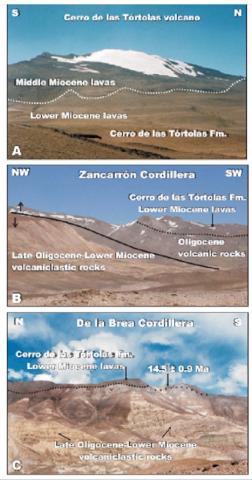Vanesa D. Litvak, Stella Poma
2 014
Geologica Acta 12(2):151-170
Miocene arc volcanism is manifested widely in the Valle del Cura-El Indio belt region (29°30´–30° South latitude), in the southern Central Andes of Argentina and Chile. The magmas that fed this volcanism are well represented by the Cerro de las Tórtolas Formation, which is divided into two volcanic episodes based on petrographic, chemical and age differences: an older basaltic-andesitic event (16–14Ma) and a younger andesitic to dacitic (13–10Ma) one. Representative plagioclase, orthopyroxene, clinopyroxene and amphibole phenocrysts from rock samples already characterized from geochemical and isotopic viewpoints were selected for electron microprobe determination of mineral chemistry. Results indicate an overall homogeneous composition for each of the mineral phases. Equilibrium temperatures were estimated through two-pyroxenes, amphibole-plagioclase and amphibole geothermometers, which show a consistent temperature range between 970 to 850°C. Equilibrium pressure calculated using amphibole composition for volcanic suites produced the most comprehensive results for pressure equilibrium conditions, with results close to 4kb. Changes in the residual mineral assemblages and variations in isotopic signatures indicate that primary magmas were equilibrated at the lower crust with a gradual increase of crustal thickness. These melts evolved towards intermediate magma chambers, where crystallization of phenocrysts occurred at the same temperature and pressure conditions, hence, no increase in depth of intermediate magma chambers is registered although the increase of crustal thickness registered from Lower to Middle Miocene times.
10.1344/105.000002081

